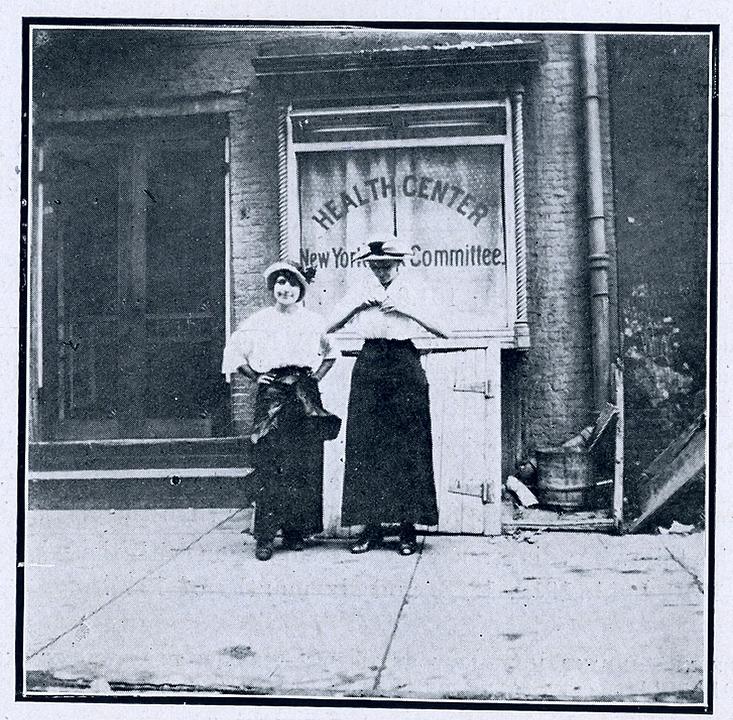When reading the hundred death certificates of the members of the community (filing death certificates in New York City was not compulsory until the twentieth century), one is struck first by the number of infant deaths: forty-five are for children under the age of two. They died mostly of poverty: "marasmus" and "inanition," both illnesses related to malnutrition; lung diseases related to the conditions in which they lived; and some common childhood diseases like gastroenteritis and measles, which today would not be a death sentence and even then were probably not death sentences for children of wealthy parents.
Adults faced tuberculosis, or consumption, related to the crowded and unsanitary conditions in which they lived. Tuberculosis was rampant in the Washington Street neighborhood, and despite the city's efforts at prevention it remained a scourge for decades. Other lung diseases, such as bronchitis and pneumonia were common killers.
Women and children's care was in the hands of three Syrian midwives: Malake Nafash, Mannie Shahdan, and Barbara Sirgany, who home-delivered most of the babies in the community in the early days. None were qualified to treat serious illnesses, and all death certificates were signed by male doctors, many of them western-trained Syrian doctors who had come to the United States with medical degrees from Syrian Protestant College (now the American University of Beirut), or had earned degrees at American medical schools. They soon supplanted the midwives in even the most basic health care, delivering babies and providing reproductive care to women. But as the doctors moved to Brooklyn along with other prosperous Syrians, the colony in Manhattan remained poor and underserved. The Brooklyn community though was much better off, having more light and air in their homes, more space, and cleaner conditions in general. Their health and life spans improved.
Adults faced tuberculosis, or consumption, related to the crowded and unsanitary conditions in which they lived. Tuberculosis was rampant in the Washington Street neighborhood, and despite the city's efforts at prevention it remained a scourge for decades. Other lung diseases, such as bronchitis and pneumonia were common killers.
Women and children's care was in the hands of three Syrian midwives: Malake Nafash, Mannie Shahdan, and Barbara Sirgany, who home-delivered most of the babies in the community in the early days. None were qualified to treat serious illnesses, and all death certificates were signed by male doctors, many of them western-trained Syrian doctors who had come to the United States with medical degrees from Syrian Protestant College (now the American University of Beirut), or had earned degrees at American medical schools. They soon supplanted the midwives in even the most basic health care, delivering babies and providing reproductive care to women. But as the doctors moved to Brooklyn along with other prosperous Syrians, the colony in Manhattan remained poor and underserved. The Brooklyn community though was much better off, having more light and air in their homes, more space, and cleaner conditions in general. Their health and life spans improved.







